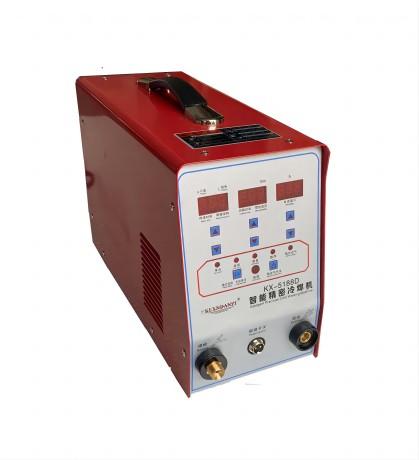In the dynamic world of metal fabrication, efficiency is paramount. The ability to join metals swiftly and reliably without compromising on quality can significantly impact production timelines and overall costs. Cold welding machines have emerged as game-changers in this domain, offering a host of benefits that enhance efficiency in metal fabrication.
This blog post explores how cold welding machines contribute to more efficient metal fabrication processes.
Understanding Cold Welding
Cold welding, or contact welding, is a process that joins two metals without the application of heat. Instead, it relies on pressure to create a strong bond at the atomic level. The metals must be clean and free from oxides and other contaminants for cold welding to be effective.

Key Advantages of Cold Welding Machines
- No Heat-Affected Zones
Traditional welding methods often involve high temperatures that can create heat-affected zones (HAZ) in the materials being joined. These zones can alter the mechanical properties of the metals, potentially leading to weaknesses and defects. Cold welding eliminates this issue by bonding metals without heat, preserving their original properties and ensuring a stronger, more reliable joint.
- Energy Efficiency
Cold welding machines are highly energy-efficient compared to traditional welding equipment. Since the process does not require heat, there is no need for energy-intensive heating elements or cooling systems. This results in lower energy consumption, reduced operational costs, and a smaller carbon footprint, making cold welding a more sustainable option.
- Speed and Productivity
Cold welding machines can significantly speed up the metal fabrication process. The absence of heating and cooling phases means that the bonding occurs almost instantaneously, allowing for faster production cycles. This increased speed enhances overall productivity, enabling fabricators to meet tight deadlines and increase throughput.
- High-Quality Bonds
The bonds created by cold welding machines are exceptionally strong and clean. The pressure-based process ensures that the metals are fused at the atomic level, resulting in a seamless joint with no inclusions or impurities. This high-quality bond is particularly advantageous in applications where strength and reliability are critical, such as aerospace and electronics manufacturing.
- Versatility
Cold welding machines are versatile tools that can handle a wide range of metals and applications. They are effective for joining dissimilar metals, which can be challenging with traditional welding methods. This versatility allows fabricators to use a single machine for multiple tasks, reducing the need for different types of welding equipment and further improving efficiency.

Applications of Cold Welding in Metal Fabrication
Aerospace Industry
In the aerospace industry, where precision and reliability are paramount, cold welding is used to join lightweight metals such as aluminum and titanium. The process ensures that the structural integrity of the materials is maintained, which is crucial for the safety and performance of aircraft components.
Electronics Manufacturing
Cold welding is widely used in the electronics industry for joining conductive metals like copper and silver. The high-quality bonds ensure excellent electrical conductivity, which is essential for the performance of electronic circuits and devices.
Automotive Industry
In automotive manufacturing, cold welding is employed to join various metal components, contributing to the production of lighter and more fuel-efficient vehicles. The speed and efficiency of cold welding help automotive manufacturers streamline their production processes and reduce costs.
Metal Fabrication Shops
General metal fabrication shops benefit from the versatility and efficiency of cold welding machines. These machines can be used for a variety of tasks, from creating custom metal parts to repairing damaged components, making them invaluable tools in the fabrication process.
Conclusion
Cold welding machines offer a multitude of advantages that enhance efficiency in metal fabrication. By eliminating heat-affected zones, reducing energy consumption, speeding up production, and providing high-quality bonds, these machines are transforming the way metals are joined.
Their versatility and reliability make them indispensable tools in industries ranging from aerospace to electronics, underscoring their pivotal role in modern metal fabrication. If you have any questions about our products, please feel free to contact us.
